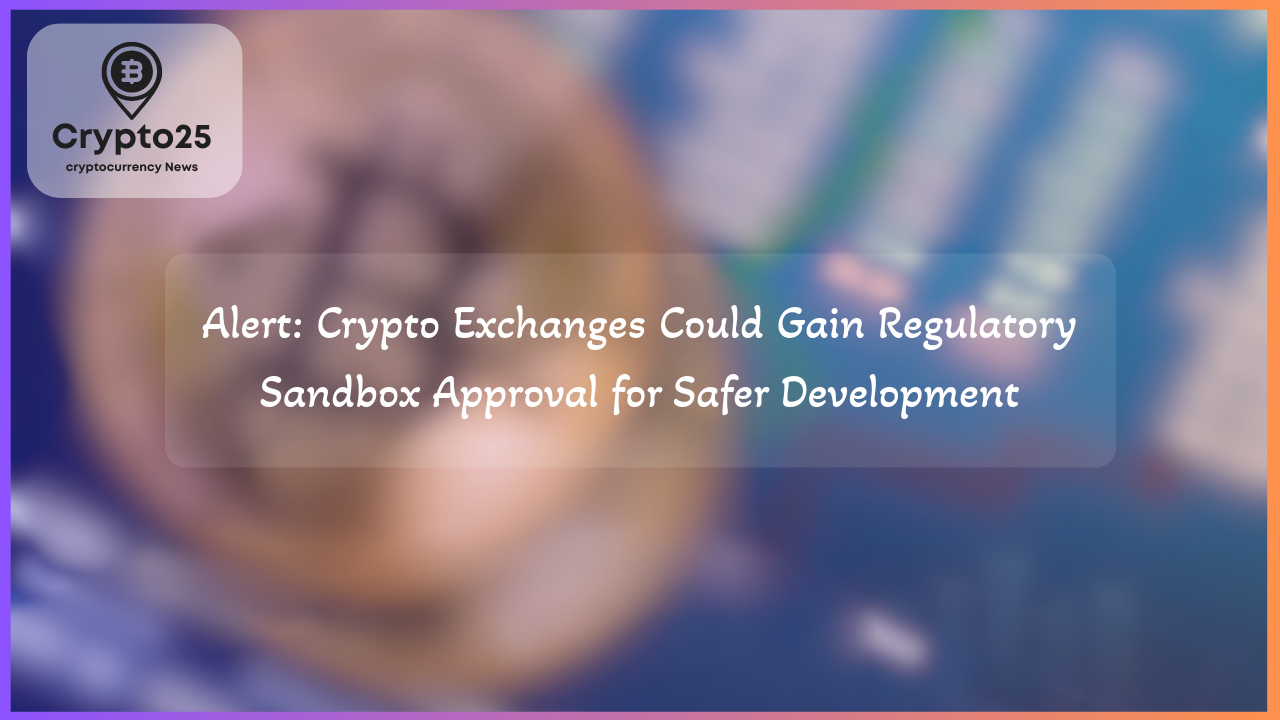
The U.S. Securities and Exchange Commission (SEC) is gradually opening its doors to innovation in the cryptocurrency sector by exploring a “regulatory sandbox” for digital assets. This experimental framework could revolutionize how crypto exchanges operate, potentially enabling them to trade tokenized securities. As the blockchain industry evolves, these regulatory initiatives highlight a promising path forward for both financial innovation and governance.
### SEC Embraces the Idea of a Regulatory Sandbox for Digital Assets
The SEC recently suggested implementing a regulatory sandbox specifically for digital assets, aiming to encourage innovation while maintaining oversight. Acting SEC Chair Mark Uyeda emphasized the importance of providing temporary, conditional exemptive relief to unregistered crypto exchanges. This framework would allow exchanges to explore new avenues, such as trading tokenized stocks and bonds, before formal laws are established. Notably, tokenized securities represent traditional financial instruments—like stocks—digitized on blockchain networks, combining the robustness of traditional finance with the efficiency of blockchain technology.
Uyeda’s message, delivered during a pre-recorded speech, underscores the potential for regulatory sandboxes to serve as testing grounds for new products. The concept creates an environment where crypto exchanges can experiment without fear of legal retribution. Tokenized securities, in particular, stand to benefit from these relaxed regulatory standards, as firms would gain the freedom to evaluate their technical and commercial feasibility.
### Tokenized Securities: The Next Frontier for Crypto Exchanges?
Tokenized securities, which convert conventional instruments like equities and bonds into blockchain assets, are a key focus of the regulatory sandbox proposal. At the SEC’s latest roundtable on crypto trading, Commissioner Hester Peirce expressed her support for these trials. According to Peirce, such initiatives could provide the data needed to shape future policies while fostering competition and innovation within the blockchain ecosystem. This aligns with her prior advocacy for a “digital securities sandbox,” designed to harmonize experimentation across jurisdictions, including similar efforts in the United Kingdom.
While nations such as Colombia have already piloted crypto-specific regulatory sandboxes, establishing one tailored for tokenized securities in the U.S. represents a significant step forward. The SEC has historically leveraged sandboxes in traditional finance to innovate processes like loan underwriting, and there’s optimism that crypto-related frameworks could achieve similar success. However, challenges remain, especially with balancing innovation against risks to investors and financial stability.
| Title | Details |
|---|---|
| Market Cap | $1.2 Trillion |
| Tokenized Asset Benefits | Efficiency, Transparency, Global Accessibility |
| Regulatory Sandbox Timeline | Limited to Conditional Periods |
### Balancing Innovation and Risk in the Crypto Industry
While the concept of regulatory sandboxes excites proponents within the blockchain industry, it also raises concerns among policymakers. Caroline Crenshaw, the SEC’s Democratic commissioner, voiced apprehensions regarding the risks associated with unregulated crypto exchanges offering tokenized securities. These platforms typically consolidate multiple functions, such as trading and custody, creating systemic vulnerabilities that could disrupt markets or ripple into traditional finance.
Crenshaw argued that regulated securities exchanges mitigate risks by spreading responsibilities across various entities, a model not currently practiced by crypto platforms. Such centralization, she contends, poses threats not just to individual investors but also to the stability of the broader financial ecosystem. As the SEC navigates this uncharted territory, balancing the competing demands of fostering innovation while ensuring market integrity becomes increasingly essential.
The debate around tokenized securities and regulatory sandboxes reflects the forward-thinking yet contentious nature of modern financial regulation. Should the SEC succeed in crafting a robust framework, it could position the U.S. as a global leader in blockchain-based securities trading. With increasing demand for decentralized and tokenized assets, such initiatives are poised to shape the next chapter of finance.
As crypto markets evolve, regulatory decisions like these will significantly influence the industry’s trajectory. By cautiously supporting innovation while addressing its risks, the SEC has an opportunity to create a sustainable financial ecosystem that benefits all stakeholders.
